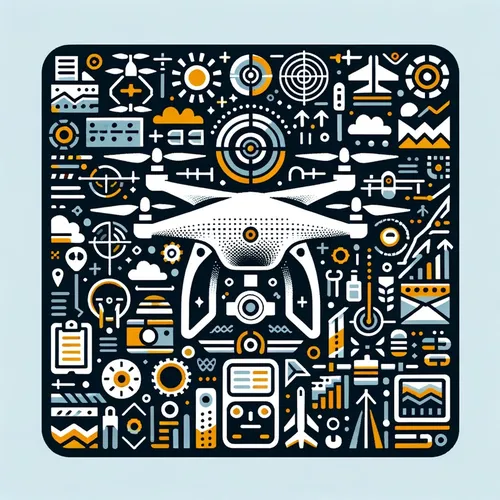Drones Get Brainy: AI-Powered Maintenance, Longer Flights, and Big Bucks Ahead
- Author
- Quiet. Please
- Published
- Wed 20 Aug 2025
- Episode Link
- https://www.spreaker.com/episode/drones-get-brainy-ai-powered-maintenance-longer-flights-and-big-bucks-ahead--67451610
This is you Professional Drone Pilot: Flight Tips & Industry Updates podcast.
Welcome back, listeners, to your essential guide for professional drone pilots—where cutting-edge flight tips and industry updates meet practical advice and opportunity. As we move through August, professionals in aerial photography, asset inspection, and commercial drone operations are experiencing a technological leap. According to Dronelife, a team from the University of Texas at Arlington has successfully tested a millimeter-wave radar system for predictive drone maintenance, signaling the shift from manual checks to real-time condition monitoring. This means fewer breakdowns, reduced operational downtime, and longer drone lifespans just as larger fleets are becoming the industry norm. Meanwhile, next-generation battery chemistries reported by DSLR Pros are driving flight times up by as much as thirty percent, making it possible for pilots to take on larger and more lucrative contracts with fewer mission interruptions. In the business world, the drone maintenance sector is projected to grow at over five percent annually through 2033 according to Archive Market Research, driven by artificial intelligence and data analytics that enable predictive maintenance and eco-friendly repairs, directly optimizing your investment and workflow.
For pilots keen on technical edge, streamlined equipment maintenance is the new baseline. Rely more on modular drone systems with swappable payloads as highlighted by Dronefly, allowing you to standardize your fleet and reduce maintenance complexity. Before each job, run complete preflight diagnostics—do not just check batteries and motors, but look for sensor misalignments and firmware out-of-date notices to avoid the most common mid-mission failures. In flight technique, the latest AI-driven autonomy functions allow for precision pathing even in strong gusts or during complex roof inspections, so stay updated on your drone’s software capabilities and practice manual overrides for times when automation is not enough. In client relations, transparency around safety, insurance, and flight planning is building trust—show clients your updated Part 107 license or the advanced operations certificate as now required for urban or high-risk missions. ZenaTech and FAA guidance affirm that refresher courses and recurrent online training are mandatory every two years. With drone insurance providers now rolling out tailored liability policies to cover everything from property damage to privacy claims, a robust insurance portfolio is quickly becoming a client expectation and a competitive edge.
Smart pricing strategies now rely on market data: larger projects may demand bundled service offerings with built-in maintenance and quick-turn deliverables. Demand in precision agriculture, construction monitoring, and public safety is up, so diversify your client list to include both recurring contracts and high-value one-off projects. Weather tech integration is more critical than ever—always access real-time wind, precipitation, and airspace alerts, since adverse weather now accounts for the majority of insurance claims in commercial drone ops. Looking forward, experts agree AI-powered automation, sustainable maintenance, and ever-increasing regulatory nuance will define aerial work for years to come, offering both opportunity and challenge.
Thank you for tuning in today. Be sure to join us again next week for more on professional drone operations. This has been a Quiet Please production, and for more, check out Quiet Please Dot A I.
For more http://www.quietplease.ai
Get the best deals https://amzn.to/3ODvOta
